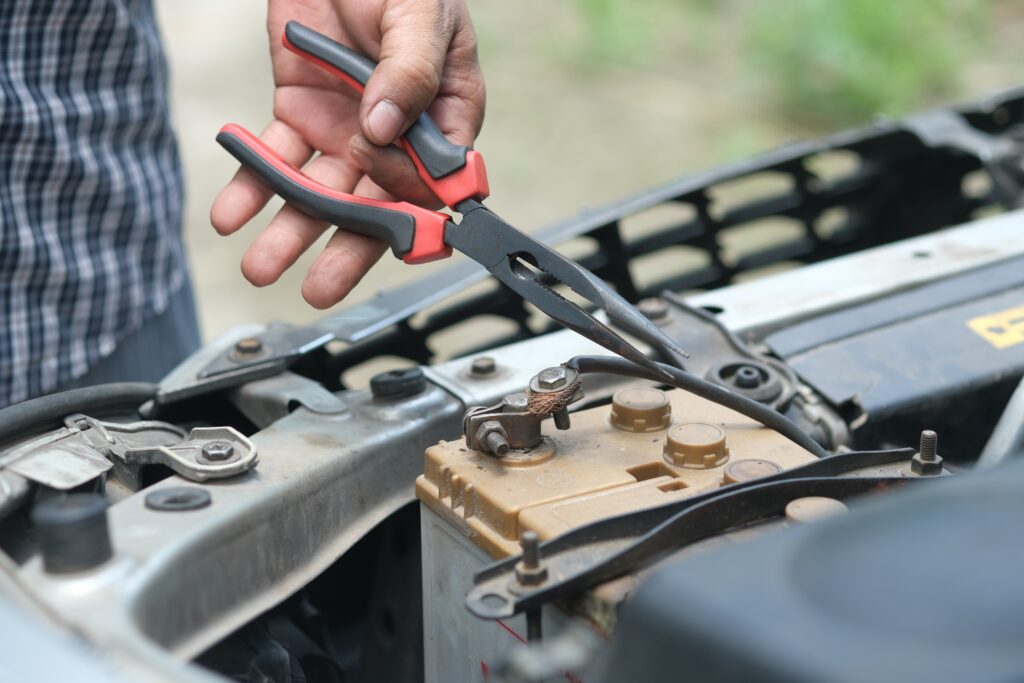You may not realize it, but the exhaust flange gasket plays a crucial role in keeping your vehicle’s exhaust system functioning properly. This often overlooked component helps to seal the connection between the exhaust manifold and the rest of the exhaust system, preventing any leaks that could lead to potential damage. But how often should you actually replace this small but essential part? In this article, we will explore the factors that influence the lifespan of an exhaust flange gasket and provide you with some guidelines to ensure your vehicle’s exhaust system remains in top shape.

Understanding the Function of an Exhaust Flange Gasket
Role of an exhaust flange gasket
An exhaust flange gasket plays a crucial role in the functioning of a vehicle’s exhaust system. It serves as a seal between the exhaust manifold or header and the rest of the exhaust system, usually the catalytic converter or exhaust pipe. The gasket prevents exhaust gases from leaking out and ensures proper flow of gases from the engine to the exhaust system. It also helps in reducing noise and vibrations generated by the exhaust system.
How the exhaust flange gasket works in a vehicle
When the engine is running, the exhaust gases created during the combustion process are directed through the exhaust manifold or header. The exhaust flange gasket creates a tight seal between the manifold/header and the downstream components of the exhaust system. This seal prevents any leaks or the escape of exhaust gases from the system. By maintaining this seal, the gasket ensures that the exhaust gases are properly guided through the rest of the system, reducing noise and preventing potential damage to surrounding components.
Signs that the Exhaust Flange Gasket Needs Replacing
Symptoms of a faulty exhaust flange gasket
It is essential to be aware of the signs indicating a faulty exhaust flange gasket to prevent any further damage to your vehicle. Some common symptoms of a failing gasket include:
-
Exhaust leaks: If you notice a loud hissing or popping sound coming from the engine area, it may indicate an exhaust leak caused by a failing gasket.
-
Decreased fuel efficiency: A faulty gasket can disrupt the proper flow of exhaust gases, leading to decreased fuel efficiency and potentially higher fuel consumption.
-
Unusual smell: A leaking exhaust flange gasket can cause exhaust gases to escape into the engine bay or passenger compartment, resulting in a noticeable sulfur-like smell.
-
Engine performance issues: A failing gasket can impact engine performance, leading to misfires, rough idling, or a decrease in power output.
Consequences of driving with a faulty gasket
Ignoring the signs of a faulty exhaust flange gasket and continuing to drive with it can have several negative consequences:
-
Safety hazards: Leaking exhaust gases pose a serious risk, as they contain carbon monoxide, a toxic gas. Inhaling high levels of carbon monoxide can be fatal.
-
Damage to engine components: An exhaust leak caused by a faulty gasket can affect other engine components. Over time, the constant exposure to heat and gases may lead to the deterioration of nearby parts, such as oxygen sensors or catalytic converters, resulting in expensive repairs.
-
Increased emissions: A failing gasket can disrupt the proper flow of exhaust gases, leading to increased emissions. This not only contributes to air pollution but may also cause your vehicle to fail emissions tests, resulting in legal issues and potential fines.
Determining Exhaust Flange Gasket Lifespan
Factors affecting gasket lifespan
The lifespan of an exhaust flange gasket can vary depending on several factors:
-
Quality of the gasket: The quality of the gasket plays a significant role in its lifespan. Higher quality gaskets made from durable materials are likely to last longer compared to lower quality options.
-
Driving conditions: Extreme driving conditions, such as frequent stop-and-go traffic, excessive idling, or driving in areas with extreme temperatures, can accelerate the wear and tear on the gasket, shortening its lifespan.
-
Maintenance practices: Regular maintenance, including inspections of the exhaust system, can help identify potential issues with the gasket early on and prevent further damage. Neglecting maintenance can result in premature gasket failure.
-
Installation quality: Proper installation of the gasket is crucial. If the gasket is not installed correctly or if other components of the exhaust system are damaged, it can lead to premature failure.
The average lifespan of an exhaust gasket
On average, an exhaust flange gasket can last anywhere between 50,000 to 100,000 miles. However, this can vary depending on the factors mentioned above. It is important to monitor the condition of the gasket periodically and address any signs of wear or failure promptly.
Procedures for Changing the Exhaust Flange Gasket
Tools needed for replacement
Before replacing an exhaust flange gasket, make sure you have the following tools:
-
Socket set: A set of sockets in various sizes will be needed to remove bolts or nuts securing the exhaust system components.
-
Wrenches: Both a standard wrench and an adjustable wrench may be necessary to loosen and tighten bolts.
-
Screwdriver: A screwdriver may be needed to remove any screws or clamps securing the exhaust system components.
-
Exhaust sealant: Depending on the type of gasket and the specific installation instructions, you may need exhaust sealant to ensure a proper seal when installing the new gasket.
Step by step guide for replacing the gasket
-
Safety first: Ensure the vehicle is parked on a level surface and the engine is completely cool before starting the replacement process. Put on appropriate safety gear, including gloves and safety glasses.
-
Locate the exhaust flange: Identify the exhaust flange where the gasket needs to be replaced. It is typically located between the exhaust manifold/header and the downstream components of the exhaust system.
-
Disconnect the exhaust system components: Loosen and remove any bolts or clamps securing the exhaust system components. This may involve disconnecting the downstream components such as the catalytic converter or muffler.
-
Remove the old gasket: Carefully remove the old gasket from the exhaust flange, ensuring that no debris or residue is left behind.
-
Clean the surface: Use a wire brush or a scraper to clean the surface of the exhaust flange and remove any remaining gasket material. The surface must be clean and free of any debris to ensure a proper seal with the new gasket.
-
Install the new gasket: Place the new gasket onto the exhaust flange, ensuring it is properly aligned. Follow the manufacturer’s instructions for any additional steps, such as applying exhaust sealant.
-
Reassemble the exhaust system: Reconnect the downstream components of the exhaust system, ensuring that all bolts or clamps are securely tightened.
-
Check for leaks: Start the engine and listen for any unusual noises or hissing sounds. Inspect visually for any signs of exhaust leaks. If leaks are detected, recheck the tightness of the connections or consider seeking professional help.

Preventive Measures to Extend the Lifespan of an Exhaust Flange Gasket
Proper vehicle maintenance
To extend the lifespan of your exhaust flange gasket, it is important to follow proper vehicle maintenance practices:
-
Regular inspections: Periodically inspect the exhaust system, including the gasket, for signs of wear or damage. Address any issues promptly to prevent further damage.
-
Follow manufacturer’s recommendations: Adhere to the manufacturer’s recommended maintenance schedule for your vehicle. This includes regular oil changes, tune-ups, and inspections.
-
Avoid excessive idling: Excessive idling can generate unnecessary heat and put additional strain on the gasket. Minimize idling whenever possible.
-
Avoid harsh driving: Aggressive driving behaviors, such as rapid acceleration and abrupt braking, can cause stress on the exhaust system and the gasket. Practice smooth driving techniques to minimize wear and tear.
How to avoid damaging the exhaust flange gasket
In addition to proper maintenance, there are some precautions you can take to avoid damaging the exhaust flange gasket:
-
Avoid off-road driving: Off-road driving exposes the exhaust system to potential damage from debris, uneven terrain, and excessive vibrations, which can harm the gasket.
-
Be cautious of speed bumps and potholes: Carefully navigate over speed bumps and potholes to minimize the stress exerted on the exhaust system. Slow down to reduce the impact.
-
Avoid excessive weight: Avoid overloading your vehicle or carrying excessive weight, as the added strain on the suspension system and exhaust system can impact the gasket.
Cost of Replacing an Exhaust Flange Gasket
Average cost of exhaust flange gasket replacement
The cost of replacing an exhaust flange gasket can vary depending on factors such as the make and model of the vehicle, the location of the repair shop, and whether you choose a DIY approach or seek professional help. On average, the cost of a replacement gasket can range from $50 to $200. Labor costs for professional installation may vary, typically ranging from $100 to $300.
Comparison of DIY replacement versus professional replacement costs
If you have the necessary tools and mechanical skills, you may choose to replace the exhaust flange gasket yourself, potentially saving on labor costs. However, it is important to consider your level of expertise and the potential risks associated with improper installation. A professional mechanic will have the knowledge and experience to ensure a proper replacement, reducing the chances of future issues or damage to surrounding components.

Safety Measures while Replacing an Exhaust Flange Gasket
Safety gear to use while replacing
When replacing an exhaust flange gasket, it is important to prioritize safety. The following safety gear is recommended:
-
Safety glasses: Protect your eyes from potential debris or particles that may dislodge during the replacement process.
-
Gloves: Wear gloves to protect your hands from sharp edges, hot surfaces, or chemicals while handling the exhaust system components.
-
Respiratory protection: Since exhaust gases can be harmful, consider using a mask or respirator while working in close proximity to the exhaust system.
Potential hazards during replacement and how to avoid them
While replacing an exhaust flange gasket, it is crucial to be aware of potential hazards and take precautions to avoid them:
-
Heat-related burns: The exhaust system can become extremely hot. Always allow sufficient time for the system to cool down before starting any work.
-
Sharp edges: Be cautious of sharp edges and protruding bolts or brackets while working on the exhaust system. Wear gloves and use appropriate tools to minimize the risk of cuts or injuries.
-
Chemical exposure: Exhaust sealants or cleaning agents used during the replacement process may contain chemicals. Follow the manufacturer’s instructions and avoid direct contact with these substances. Ensure proper ventilation in the work area.
-
Falling vehicle: If working underneath the vehicle, use proper jack stands and ensure the vehicle is securely supported to prevent it from falling and causing serious injury.
Understanding the Material Composition of Exhaust Flange Gaskets
Common materials used in manufacturing gaskets
exhaust flange gaskets are made from various materials, each with its own properties and benefits. Some common materials used in the manufacturing of gaskets include:
-
Graphite: Graphite is a popular material known for its heat resistance, flexibility, and ability to create an effective seal. It can withstand high temperatures and is commonly used in high-performance applications.
-
Metal (e.g., steel or aluminum): Metal gaskets are durable and provide excellent sealing properties. They are often used in applications where high pressure and extreme temperatures are expected.
-
Fiber materials (e.g., asbestos-free materials): Many exhaust flange gaskets are made from fiber materials that are resistant to heat and pressure. Asbestos-free options are available to ensure safety.
Correlation between gasket material and durability
The material composition of an exhaust flange gasket directly affects its durability and performance. Choosing the right material depends on the specific requirements of your vehicle and the intended application. Factors such as temperature range, pressure, and compatibility with sealing surfaces should be considered when selecting a gasket material. Consult your vehicle’s manufacturer or a trusted mechanic to determine the most suitable material for your exhaust flange gasket.
In conclusion, understanding the function of an exhaust flange gasket is essential for maintaining the efficiency and safety of your vehicle’s exhaust system. By being aware of the signs indicating a faulty gasket and following proper maintenance practices, you can extend the lifespan of the gasket. Whether you choose to replace the gasket yourself or seek professional help, prioritize safety and follow the necessary precautions. By taking these measures and understanding the correlation between gasket material and durability, you can ensure a well-functioning exhaust system and enjoy a smooth driving experience.
